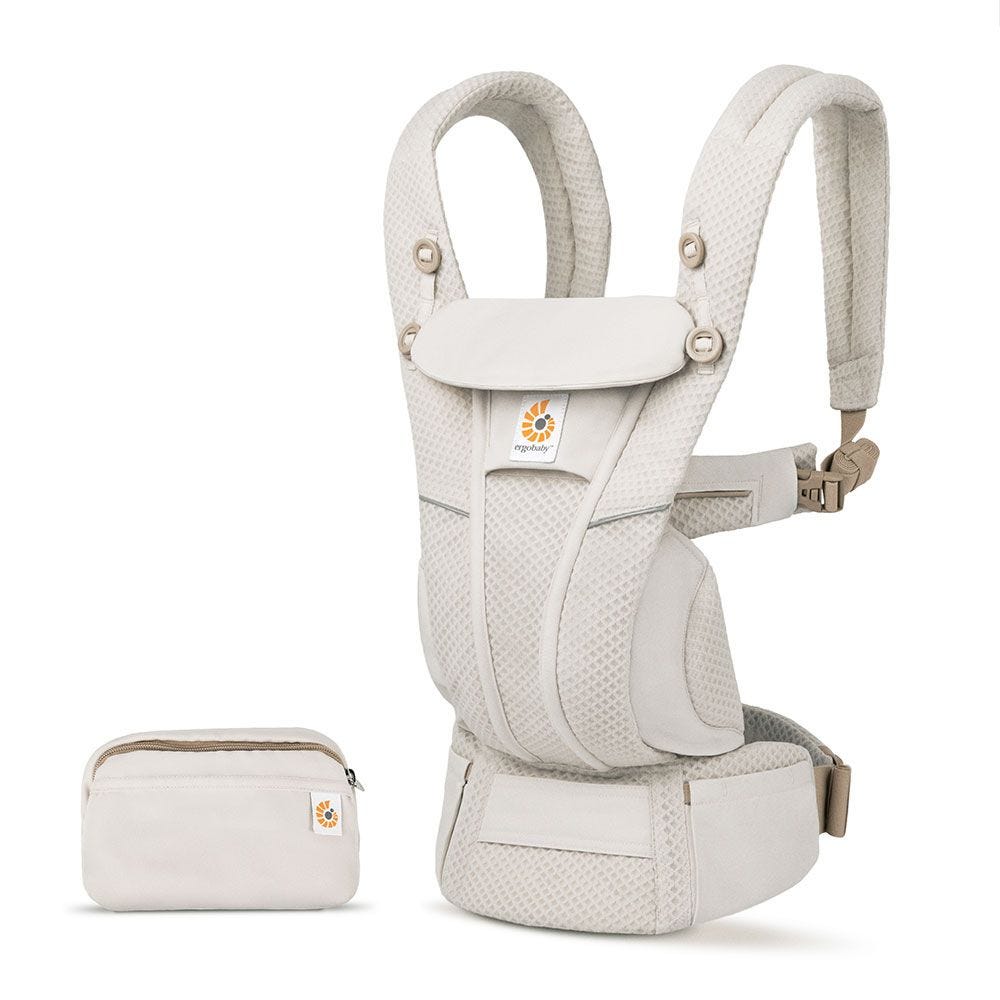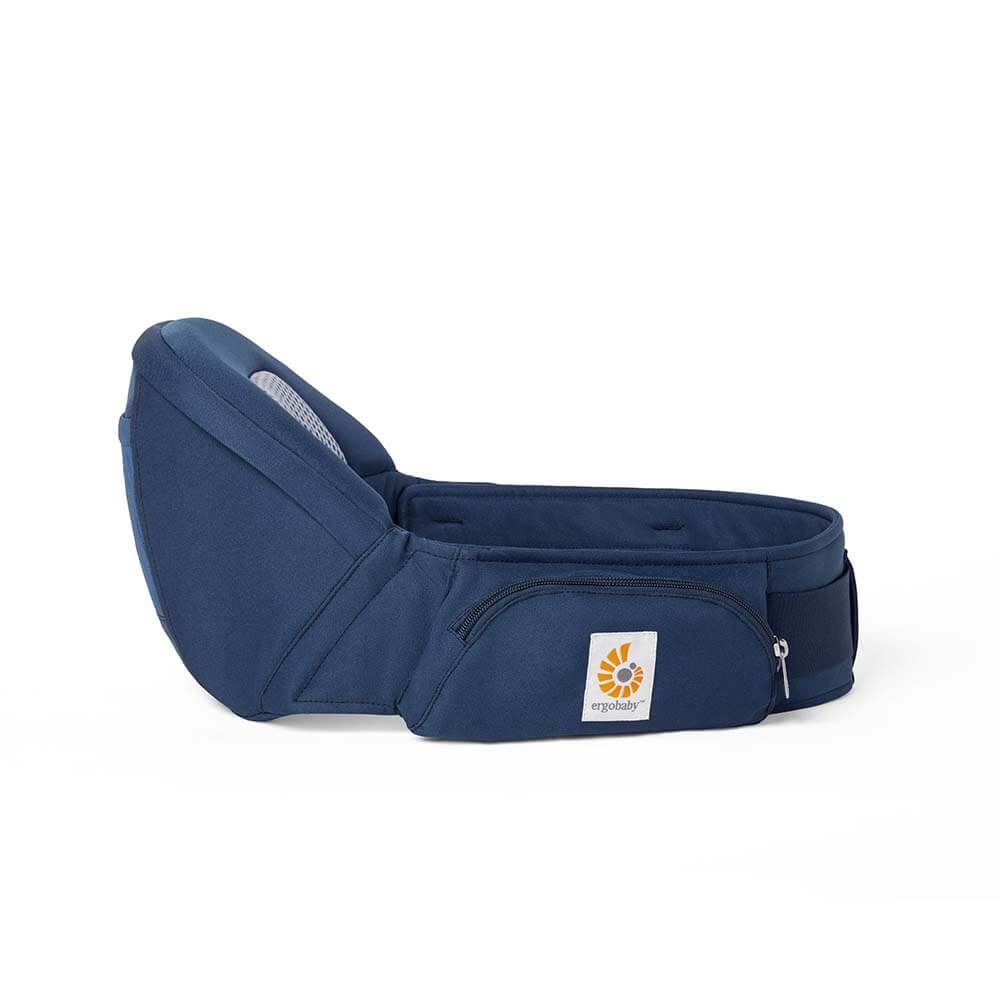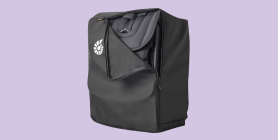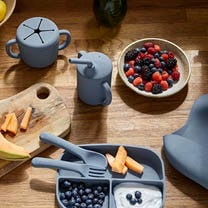
Carrying a baby in a baby carrier is more than just a practical way to keep your hands free. It also helps you to build a close bond with your little one and make your everyday life with baby easier. Whether you are completely new to the babywearing business or simply want to improve your technique, today's blog article will give you basic babywearing tips that you can apply to any type of baby carrier, wrap or sling. From wraps like the Ergobaby Aura to ergonomic comfort carriers like our new, summery Adapt Natural Linen - we’re going to share how to carry your baby safely and comfortably.
Advantages of babywearing with a baby carrier
Before we get to the tips, let's take a look at the many benefits of babywearing. It's not just about being and staying mobile with your little one - which you definitely are. No, wearing a baby in a baby carrier promotes bonding between parent and child, supports breast/chestfeeding and can even help to reduce crying in newborns. It also supports and promotes your baby's motor, mental and emotional development in the long term. It also allows you as parents to maintain your active lifestyle while giving your baby closeness, security and safety. This in turn has a positive effect on the emotional well-being of both you and your child.
Babywearing from birth
As long as your baby is healthy and your choice of baby carrier provides sufficient ergonomic support for their neck and back, you can wear your baby in a baby carrier from day one. Our Ergobaby baby carriers, for example, can be used as soon as baby weighs 3.2 kg or 7 lbs so are therefore generally suitable for newborns. Most wraps and ring slings are also specially designed for newborns. And for many parents, babywearing is a great help in the early days to reassure their baby and make it easier for everyone to figure out this whole new world together.
Types of baby carriers
There are different types of baby carrier that are all slightly different and do slightly different things. Which type of carrier is right for you depends on when you want to use it, what you want to use it for, who is going to use it etc. Here are some of the types to look out for:
-
Ring Slings: Ring slings are similar to slings, but with a ring to hold the fabric in place. This makes it easier to put on. Perfect for newborns and smaller babies. Our sister brand Baby Tula offers beautiful ring slings for everyday use or special occasions.
-
Slings and wraps: These are long lengths of fabric that are wrapped around the body to ensure a safe and comfortable position for your baby. They are very versatile and adapt to different body shapes and carrying positions. Our stretchy Aura Wrap is particularly soft and cosy (great for newborns) and has an integrated orientation edge to help with tying.You can even leave the wrap on all day and pop baby in and out when needed
- Hybrid carriers: Cross between a wrap and a soft structured carrier these hybrid carriers are soft and stretchy like a wrap but with the shape, structure, and ease-of-use of a carrier. Our Embrace Newborn Carrier is the ideal choice for parents and caregivers who want to soak up all the newborn snuggles without the complication of tying a wrap with each use.
- Soft structured baby carriers: These baby carriers are the traditional ‘baby carrier’ shape and are equipped with buckles, adjustable straps and padding. Our new Adapt Natural Linen baby carrier is a great example of an ergonomic baby carrier. It’s perfect for newborns all the way through toddlerhood (up to 20.4kg) and offers three practical carrying positions: baby inwards facing on your front, a back carry and a hip carry. The soft and breathable linen fabric is perfect for the (hopefully!) soon approaching warm summer days. Or try our Omni Deluxe (suitable from 3.2 to 20.4kg and offers all four carry positions) in breathable SoftFlex Mesh.
-
Mei Tais: A mixture of wrap and ergonomic baby carrier with a fixed back section and long fabric straps for tying. They offer a secure and comfortable fit.
-
Backpack carriers: Designed for carrying older babies and toddlers on your back - ideal for hiking and outdoor activities.
-
Hip seat: This carrier is made up of a waist belt with a wedge-shaped seat making it perfect for older babies and toddlers who want to go up and down and up again. It relieves pressure on your hips, lower back, shoulders and arms. Check out our Alta and Lift options here.


Universal carrying tips for every baby carrier
So now you know the different carrying options available to you. So that you can carry your baby safely, ergonomically and comfortably in whichever carrier you pick, we now have eight universal babywearing tips for you, designed to support you in your babywearing journey regardless of the type and style of baby carrier you choose.
-
Choose the right carrier for your baby's age: Not every carrier is suitable for every stage of your baby's development. Some baby carriers are specially designed for newborns, while others can be used from newborn to toddler age. Find out which baby carrier suits you best.
-
Kissable height: Your carrier should always be worn high enough on your body that you can easily kiss the top of baby’s head without craning your neck. This ensures that you always have their face in view so that you can be sure their airways remain clear.
-
Keep it tight: Regularly check all buckles, straps and/or knots are tight and that your baby's back is well supported. Their face should also be in sight with their chin off their chest.
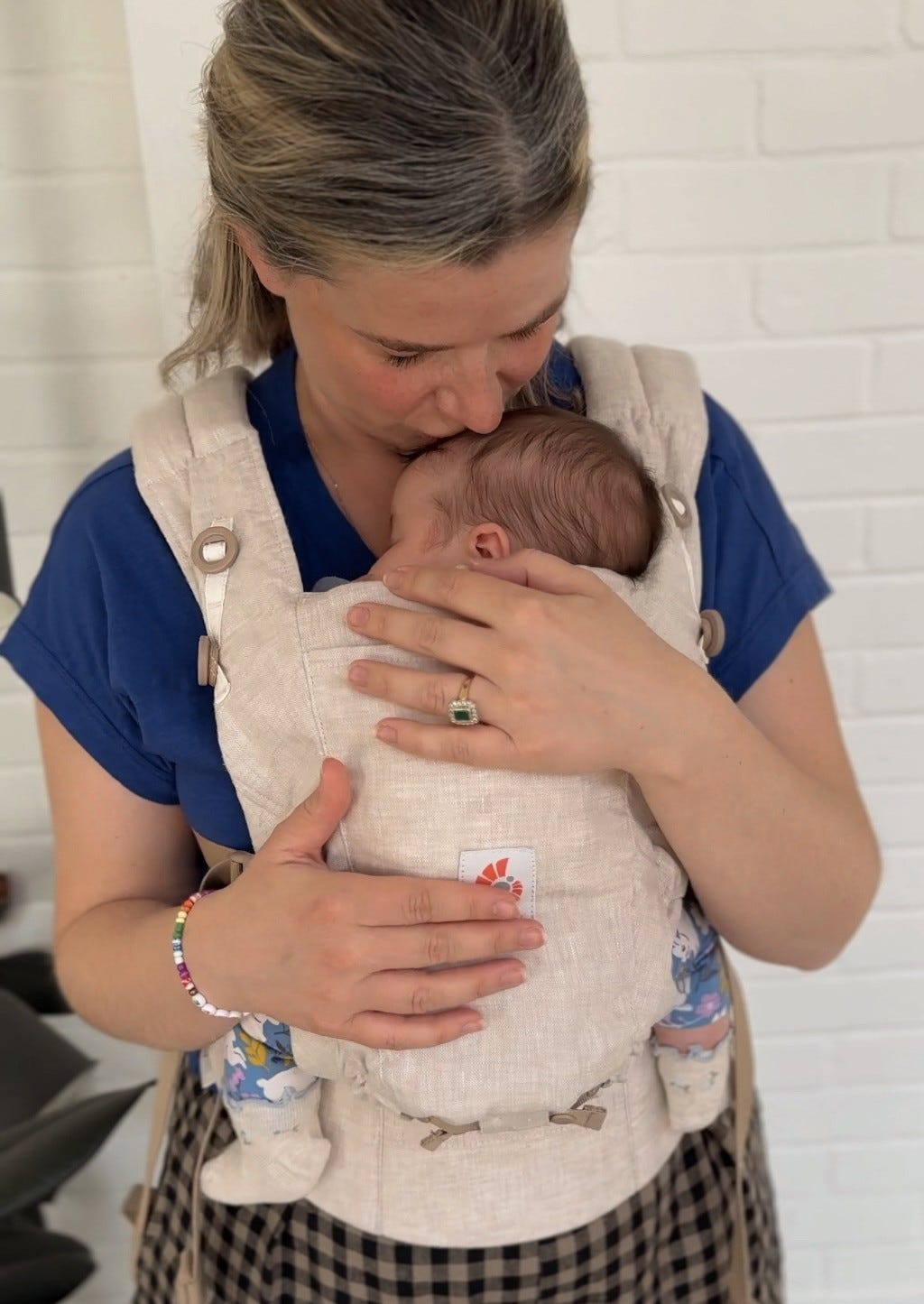

3. Pay attention to the temperature: Babies can overheat in a baby carrier. Always pay attention to the weather and dress your baby accordingly. In winter this looks like light layers and in summer, light, loose, natural fabrics are recommended. And remember: the baby carrier counts as a layer of clothing! On warm days, a baby carrier made from natural or breathable fabrics, such as the Adapt Natural Linen or Omni Deluxe Mesh, is exactly what you and baby need.
4. Try out different ways of carrying your baby: Depending on the baby carrier and baby’s age/stage of development, you can try out different positions. Baby on your front facing inwards, baby on your front facing outwards, baby on your hip or baby on your back. Practise the different positions at home to build your confidence.
5. Pay attention to your own comfort: Your baby carrier should fit snugly against your body. Padded shoulder straps and a wide hip belt help to distribute your baby's weight evenly. This takes the strain off your back and shoulders. Babywearing should not be uncomfortable for you or your baby. If it is, visit a babywearing consultant in your area to find the perfect fit for you.
6. Safety first: There are a number of times it’s not safe to use a baby carrier. For example, you mustn’t use your carrier if baby is either under or has exceeded the safe height and weight limits stipulated by the manufacturer, never fall asleep with baby in your carrier, avoid drinking hot liquids while carrying baby and avoid extreme sports or activities that could cause injury to you both.
5. Essayez différentes positions de portage : En fonction du modèle de porte-bébé et de l’âge de bébé, plusieurs positions sont possibles : face à vous sur le ventre, face au monde, sur la hanche ou dans le dos. Entraînez-vous tranquillement à la maison pour gagner en assurance.
6. Prenez soin de votre confort aussi : Le porte-bébé doit épouser votre corps confortablement. Des bretelles rembourrées et une ceinture large permettent une bonne répartition du poids de bébé, ce qui soulage le dos et les épaules. Si le portage vous semble inconfortable, à vous ou à votre bébé, n’hésitez pas à consulter un(e) conseiller(ère) en portage pour un ajustement optimal.
7. La sécurité avant tout : Il existe des situations où le portage n’est pas sûr. N’utilisez jamais un porte-bébé si votre enfant ne respecte pas les limites de poids et de taille du fabricant. Ne vous endormez jamais avec bébé dans le porte-bébé. Évitez les boissons chaudes pendant le portage, ainsi que les activités à risque ou les sports extrêmes qui pourraient vous blesser, vous ou votre bébé.
How to carry your baby correctly
If you need a little extra help or support with putting on and carrying your baby, you can find practical instructions and videos for all our baby carriers on Youtube. There’s also additional tips and babywearing hacks and ideas there too. Or you can find lots more information, tips and advice from babywearing experts on our social media channels and on our jam-packed Ergobaby blog.
Which baby carrier is right for you?
Carrying a baby in a baby carrier is a wonderful way to keep your baby cuddled close and happy while simultaneously giving you more freedom in your everyday life. You can discover the world together with your little one and experience adventures big and small. Choose the right baby carrier for you and follow our tips to fully enjoy all the many benefits of babywearing. Every baby and every parent is unique - so make sure you find out which type of baby carrier works best for you.
Have fun babywearing!

